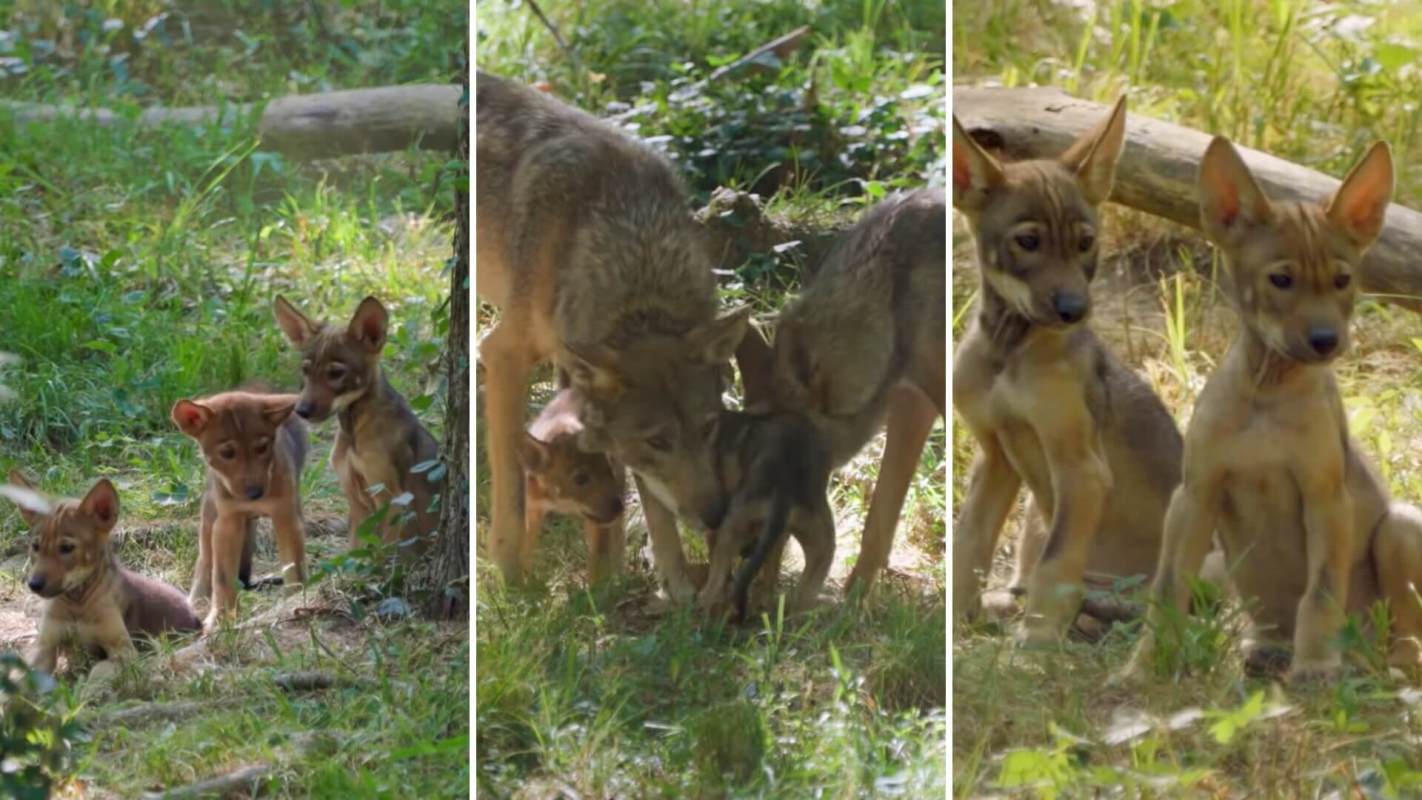The fight is back on to save America's red wolves from extinction, as highlighted by an exclusive video released by Weiler Woods for Wildlife.
This rare footage shows three red wolf cubs exploring the country in North Carolina as their parents keep watch.
In one shot, we see a wolf parent walking down the road wearing an orange radio collar, which marks them as one of 10 red wolves monitored by the U.S. Fish & Wildlife Service (USFWS).
How many red wolves are left?
The red wolf is one of the U.S.'s most endangered animals and the only wolf that is solely native to the U.S. There are thought to be between 19 and 21 red wolves left in the wild today.
The tiny population lives in North Carolina, though they once inhabited a vast area spanning from New York to Florida and Texas.
In an interview with USA Today, Ron Sutherland, a conservation scientist with the Wildlands Network, called red wolves, "one of the most endangered mammal species on the entire planet."
"For comparison purposes," he added. "There are around 1,600 giant pandas, 2,000 Bengal tigers, and 4,500 snow leopards left in the wild."
What makes red wolves so special?
Red wolves play a central part in North America's biodiversity, according to Wildlands Network.
Red wolves prevent deer from overgrazing, as their hunting patterns keep them on the move. When deer populations are under control, native plants have more of a chance to grow and fend off invasive species.
Red wolves also help quail populations flourish by feeding on raccoons and opossums, which eat bird eggs. By keeping these predators in check, red wolves allow more chicks to hatch.
Why are red wolves so endangered?
Red wolves were listed as being "threatened with extinction" starting in 1967 after relentless hunting and habitat loss.
And before 2014, 7 to 14% of the red wolf population died each year from gunshot wounds. Hunters are the leading cause of red wolves' decline. Sometimes, landowners mistake red wolves for coyotes or believe that they pose a threat to livestock — and shoot them.
Red wolves have a difficult time increasing their population, as they only give birth once a year.
Want more? Follow The Cool Down on Instagram and join our Weekly Newsletter for cool stories and easy tips that save you money, time, and our planet.








